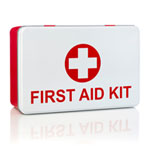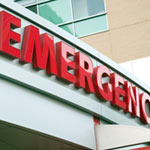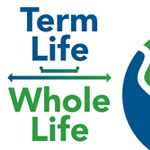Risks of Dying from Cancer
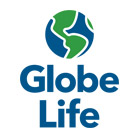
After heart disease, cancer is the second leading cause of death in the United States. The American Cancer Society suggests there were an estimated 1,735,350 new cancer cases and 609,640 deaths in 2018. With breast cancer being the most common form of cancer in women, and prostate for men, the lifetime risk of developing cancer in the United States is almost 40%, or one in three Americans.1
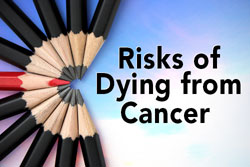
However, by knowing some basic research and statistics, Americans can help reduce the odds of developing and dying from cancer.
Mortality Trends
Fortunately, the rate of death from cancer in the United States continues to decline among both men and women. According to the American Cancer Society, the lifetime risk for each gender developing various cancers can be seen below.
| MALES | Risk of developing | Risk of dying | ||
|---|---|---|---|---|
| % | 1 in | % | 1 in | |
| All invasive sites | 39.66 | 3 | 22.03 | 5 |
| Bladder | 3.76 | 27 | 0.94 | 106 |
| Brain and nervous system | 0.7 | 143 | 0.53 | 189 |
| Breast | 0.12 | 833 | 0.03 | 3,333 |
| Colon and rectum | 4.49 | 22 | 1.91 | 52 |
| Esophagus | 0.76 | 132 | 0.77 | 130 |
| FEMALES | Risk of developing | Risk of dying | ||
|---|---|---|---|---|
| % | 1 in | % | 1 in | |
| All invasive sites | 37.65 | 3 | 18.76 | 5 |
| Bladder | 1.12 | 89 | 0.34 | 294 |
| Brain and nervous system | 0.54 | 185 | 0.41 | 244 |
| Breast | 12.41 | 8 | 2.62 | 38 |
| Cervix | 0.62 | 161 | 0.22 | 455 |
| Colon and rectum | 4.15 | 24 | 1.74 | 57 |
What’s Being Done?
The Surveillance, Epidemiology, and End Results (SEER) program developed by the National Cancer Institute (NCI) collects and distributes cancer incidence and survival data from registries all over the United States. According to SEER, from 1991 to 2015, the overall cancer death rate in the United States decreased by 26% or 2.4 million lives.
When looking at the fight against cancer, death rates are the best measurement as they are less affected by detection practices than incidence and survival. The highest peak of cancer deaths occurred during the tobacco epidemic in the 1990s with 215 deaths per 100,000 people.1 Since then, society has seen a significant reduction in adults who smoke as well as improvements in early detection and treatment. This progress has translated into more than 2.3 million less cancer deaths from 1991 to 2015.2
The Future of Cancer
The future of cancer prevention looks more hopeful than it has ever before. The Memorial Sloan Kettering Cancer Center (MSK), the world’s oldest and largest private cancer center, has taken a deeper look into five promising advances that may change our outlook and treatment on cancers.
- Precision Medicine: During his final year as president, Barack Obama released an initiative that focused on precision medicine with treatments that match our genetics history. This individualized therapy essentially reverses the effects of specific gene mutations in tumor cells. The MSK is working to perfect basket trials and tumor DNA sequencing tests.
- Checkpoint Inhibitors: Immunotherapy, a century-old technique, is when patients use their own immune system to fight cancer. The medication for this technique is under a treatment called checkpoint inhibitors, which eases constraints on the immune system to help it work more productively. MSK has played a major role in developing two checkpoint inhibitor drugs that boost the cancer-fighting powers to the immune system’s T-cells.
- Cell-Based Therapy: Chimeric Antigen Receptor (CAR) Therapy is an immunotherapy strategy where a patient’s own T-cells are manipulated to attack cancer cells more readily. Essentially, the patient’s T-cells are collected from his or her blood, genetically engineered to recognize certain proteins on cancer cells, and then infused back into the patient’s body.
- Epigenetic Therapy: For many years, doctors have attempted to control cancer by cutting out tumors or poisoning them with chemical radiations. Epigenetics focuses on transforming cancer cells back to their healthy state rather than destroying them.
- Research into Metastasis: Metastasis, the process that allows cancer cells to break off from their tumor and develop in other areas, is the cause of nine out of 10 deaths in cancer. Because metastasis is hard to detect and isolate, the process for studying and controlling is very difficult. However, with the progression in research, scientists have discovered more information about metastasis including how cancer cells remain undetected. With this latest discovery, scientist may have a better avenue for treatment.
What Can You Do?
The American Society of Clinical Oncology (ASCO) states “researchers estimate that 50% of cancer cases and deaths in the United States could be prevented if people adopted simple, healthy lifestyle choices.” These choices can include:
- Getting regular cancer test screenings can help catch some cancers early on when they’re small, have not spread, and are easier to treat.
- Maintaining a healthy weight can help prevent cancer as being overweight or obese is a major risk factor for some cancers such as colon, breast, and kidney.
- Exercising regularly has substantially shown to reduce risks of several cancers. Studies have found that an increase in physical activity can lower the growth factors that have been associated with cancer. The American Cancer Society recommends adults to get at least 150 minutes of moderate to intense activity or 75 minutes of vigorous activity each week.
- Eating a healthy diet is one of the best habits you can have. Studies have shown eating more fruits, vegetables, and whole grains are linked to lower risks of developing cancer.
- Avoid tobacco. Tobacco is responsible for almost one out of every five deaths in the United States. 80% of lung cancer deaths and 30% of all cancer deaths are caused by tobacco use.
- Alcohol consumption has shown to increase your risk for certain cancers such as breast, throat, liver, and colon. The American Cancer Society recommends men to have no more than two drinks a day and women to have no more than one.
Financing Cancer
Upon a cancer diagnosis, a patient probably wants to visit the best doctor...but what about a financial advisor? Cancer is expensive. There are two questions that need to be addressed when dealing with cancer treatment: Does the patient have health insurance? Does the patient have money in savings for deductibles and other out-of-pocket expenses?
Cancer could bring financial toxicity. Unfortunately, it’s not uncommon for cancer patients to drain all their accounts, file for bankruptcy, or even lose their house.
Insurance May Not Be Enough
The 2017 Employer Health Benefits Survey conducted by the Kaiser Family Foundation and Health Research and Education trust found 57% of employees with individual insurance plans had an out-of-pocket maximum more than $3,000 in 2017.
For many insured and uninsured people, the cost of cancer can be catastrophic so much so that they skip or delay treatments. Many patients can’t continue to work which means no income. Those who have insurance and a job that has paid sick time could still be affected by financial toxicity by running out of sick time or having to take unpaid medical leave.
The Importance of Supplemental Cancer Insurance
Supplemental cancer insurance is meant to bridge the gap between what a patient’s insurance pays and what the patient must pay out of pocket. These expenses could include:
- copays
- extended hospital stays
- lab tests
- treatments
Additionally, supplemental cancer insurance can cover non-medical treatments such as:
- home health care
- supplemental income
- child care cost
- travel and lodging expenses for treatment
Among many other things, the burden of cancer is mentally, emotionally, and financially draining. As cancer claims more and more lives, researchers and scientists have dedicated their lives to finding intelligence, treatments, techniques, and cures that will stand for the fight against the disease. Society is more hopeful now about the progression of cancer cures than ever before. We’ve learned many habits and things to avoid to help reduce our risk of cancer. With all the advancements and discoveries, we’re more prepared for the fight against cancer than ever before.
2. Cancer.org, 2018
You might also be interested in...
-
 10 Signs You May Not Be Drinking Enough Water
10 Signs You May Not Be Drinking Enough Water
-
 8 Signs You May Not Be Getting Enough Magnesium
8 Signs You May Not Be Getting Enough Magnesium
-
 About Life Insurance
About Life Insurance
-
 Do You Really Need Life Insurance?
Do You Really Need Life Insurance?
-
 Does Divorce Spell The End Of A Happy Childhood
Does Divorce Spell The End Of A Happy Childhood
-
 Globe Life is Rated A (Excellent)
Globe Life is Rated A (Excellent)
-
 Health Symptoms You Should Never Ignore
Health Symptoms You Should Never Ignore
-
 History of Life Insurance
History of Life Insurance
-
 Home Cough Remedies
Home Cough Remedies
-
 How High Should Your SPF Be
How High Should Your SPF Be
-
 How To Be Responsible About Life Insurance
How To Be Responsible About Life Insurance
-
 Is Eating Organic Really Safer?
Is Eating Organic Really Safer?
-
 Is White Vinegar A Safe Cleaning Agent?
Is White Vinegar A Safe Cleaning Agent?
-
 Planning Your Family For An Emergency Evacuation
Planning Your Family For An Emergency Evacuation
-
 The Difference Between Power Of Attorney And A Living Will
The Difference Between Power Of Attorney And A Living Will
-
 Reconsider Getting a Life Insurance Policy
Reconsider Getting a Life Insurance Policy
-
 Setting Goals For Your Employees
Setting Goals For Your Employees
-
 Skills that Make Bosses Want to Hire You
Skills that Make Bosses Want to Hire You
-
 The Importance of Life Insurance
The Importance of Life Insurance
-
 The Importance of Term Life Insurance
The Importance of Term Life Insurance
-
 Is It Time To Review Your Life Insurance Policy?
Is It Time To Review Your Life Insurance Policy?
-
 Tips On How To Prevent E.coli
Tips On How To Prevent E.coli
-
 Too Busy to Stay Healthy?
Too Busy to Stay Healthy?
-
 What Is COPD And How You Can Prevent It?
What Is COPD And How You Can Prevent It?
-
 What is Term Life Insurance?
What is Term Life Insurance?
-
 When Insurance Becomes an Investment
When Insurance Becomes an Investment
-
 Choosing Whole Life Vs Term Life Insurance
Choosing Whole Life Vs Term Life Insurance
-
 Why You Should Look Into Term Life Insurance
Why You Should Look Into Term Life Insurance
-
 Making Your Home Senior-Friendly
Making Your Home Senior-Friendly
-
 Is Whooping Cough Making A Comeback
Is Whooping Cough Making A Comeback
-
 Unusual Tricks To Reduce The Risk Of Heart Disease
Unusual Tricks To Reduce The Risk Of Heart Disease
-
 The Best First Aid Kit Everyone Should Have
The Best First Aid Kit Everyone Should Have
-
 Beware Of Dangerous Mold
Beware Of Dangerous Mold
-
 5 Things You Should Know About Thyroid Health
5 Things You Should Know About Thyroid Health
-
 What Your Eyes Reveal About Your Health
What Your Eyes Reveal About Your Health
-
 Everyday Things That Can Cause Memory Loss
Everyday Things That Can Cause Memory Loss
-
 How To Discuss Life Insurance With Your Spouse
How To Discuss Life Insurance With Your Spouse
-
 Why That Cold Won’t Go Away
Why That Cold Won’t Go Away
-
 5 Ways To Keep A Healthy Smile
5 Ways To Keep A Healthy Smile
-
 How Dangerous Is Sugar?
How Dangerous Is Sugar?
-
 5 Warning Signs To Change Healthcare Providers
5 Warning Signs To Change Healthcare Providers
-
 Simple Secrets To Conquer Flu Season
Simple Secrets To Conquer Flu Season
-
 The Hidden Bad Side Of Everyday Foods
The Hidden Bad Side Of Everyday Foods
-
 How To Avoid The Scams That Tricked So Many
How To Avoid The Scams That Tricked So Many
-
 Six Foods That May Reduce Stroke Risk
Six Foods That May Reduce Stroke Risk
-
 Empty Nesters: Don’t Ditch Life Insurance Until You Consider This
Empty Nesters: Don’t Ditch Life Insurance Until You Consider This
-
 How Does Accidental Death Insurance Work?
How Does Accidental Death Insurance Work?
-
 4 Tips To Improve Your Credit Score
4 Tips To Improve Your Credit Score
-
 6 Tech Devices You Need For Family Safety
6 Tech Devices You Need For Family Safety
-
 Public Transportation Safety Tips
Public Transportation Safety Tips
-
 Is Globe Life Insurance Reliable?
Is Globe Life Insurance Reliable?
-
 Hazards in the Kitchen: What You Do Every Day that Puts You at Risk for a Serious Accident
Hazards in the Kitchen: What You Do Every Day that Puts You at Risk for a Serious Accident
-
 Surviving a Snake Bite
Surviving a Snake Bite
-
 Is Globe Life Insurance Term or Whole Life?
Is Globe Life Insurance Term or Whole Life?
-
 The Top 4 Leading Causes of Death for People Older Than 50 and How to Avoid Them
The Top 4 Leading Causes of Death for People Older Than 50 and How to Avoid Them
-
 Nine Eye-Opening Stats That Will Make You Rethink Texting and Driving
Nine Eye-Opening Stats That Will Make You Rethink Texting and Driving
-
 Risks of Dying from Cancer
Risks of Dying from Cancer
-
 What are the Odds of Dying While Taking a Selfie?
What are the Odds of Dying While Taking a Selfie?
-
 Can I Get an Accidental Death Quote Online?
Can I Get an Accidental Death Quote Online?
-
 Buying Life Insurance for the Whole Family
Buying Life Insurance for the Whole Family
-
 What You Need to Know Before Buying Term Life Insurance
What You Need to Know Before Buying Term Life Insurance
-
 Advantages and Disadvantages of Getting Life Insurance without a Medical Exam
Advantages and Disadvantages of Getting Life Insurance without a Medical Exam
-
 A New Year's Resolution You Can Keep: Buy Life Insurance
A New Year's Resolution You Can Keep: Buy Life Insurance
-
 Food Contamination: Ways to Avoid the Potential Dangers and Keep Food Safe
Food Contamination: Ways to Avoid the Potential Dangers and Keep Food Safe
-
 Can I Increase the Face Value of My Term Life Insurance?
Can I Increase the Face Value of My Term Life Insurance?
-
 What is Mortgage Protection Insurance?
What is Mortgage Protection Insurance?
-
 Do I need Accidental Death Insurance?
Do I need Accidental Death Insurance?
-
 How Does a Graded Death Benefit Whole Life Insurance Policy Work?
How Does a Graded Death Benefit Whole Life Insurance Policy Work?

 Insurance products are available in New York from
Insurance products are available in New York from  Insurance products are available in your state from
Insurance products are available in your state from 





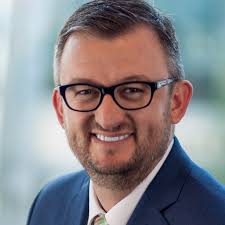 Corey A. Jones is Globe Life’s Senior Vice President of Branding and Digital Marketing. He has worked in the insurance industry for nearly 20 years. In addition to holding a degree in Organizational Leadership from Southern Nazarene University, he is also a Fellow of the Life Management Institute through LOMA, an international education and trade association for insurance and financial services.
Corey A. Jones is Globe Life’s Senior Vice President of Branding and Digital Marketing. He has worked in the insurance industry for nearly 20 years. In addition to holding a degree in Organizational Leadership from Southern Nazarene University, he is also a Fellow of the Life Management Institute through LOMA, an international education and trade association for insurance and financial services.































